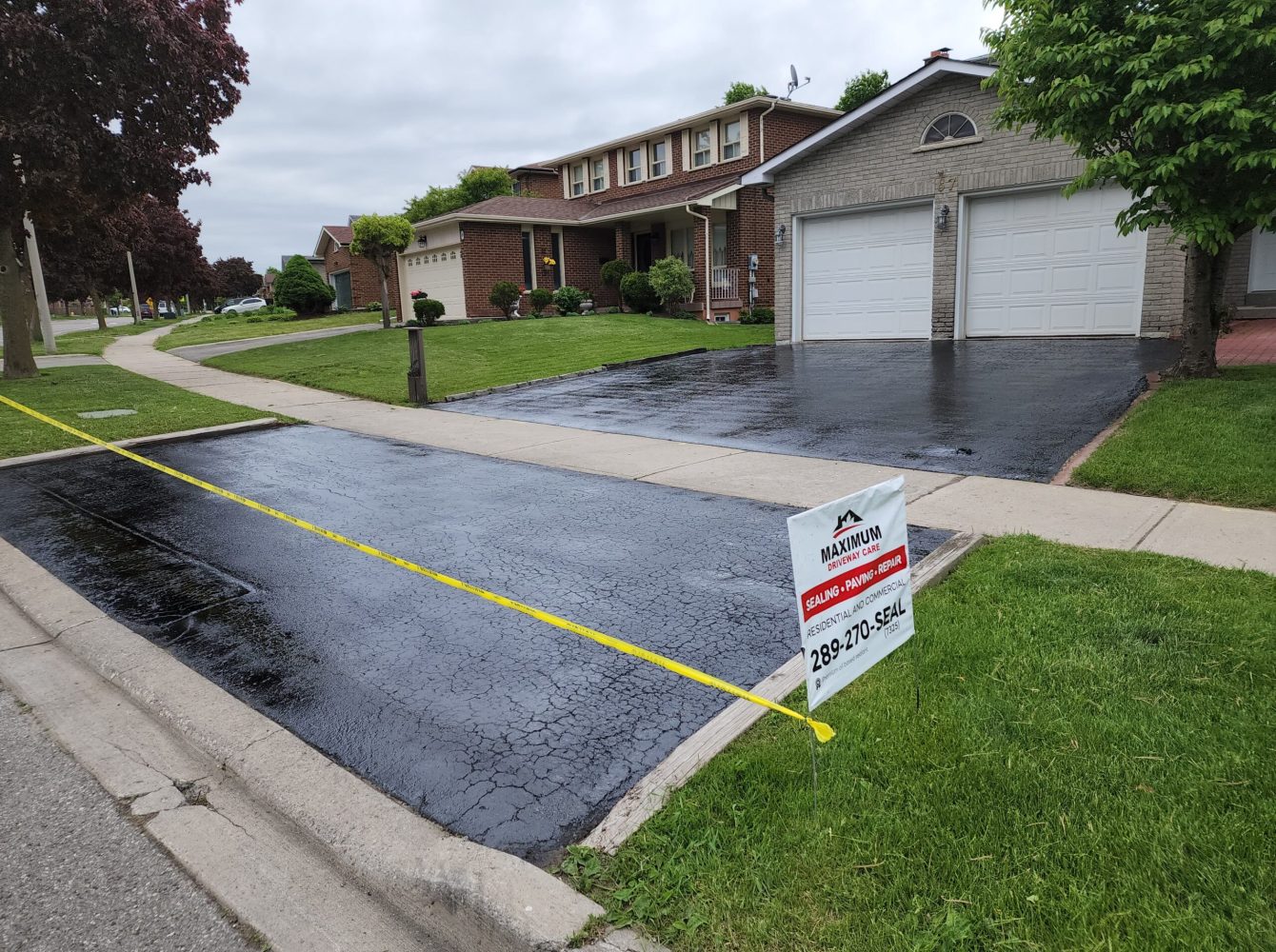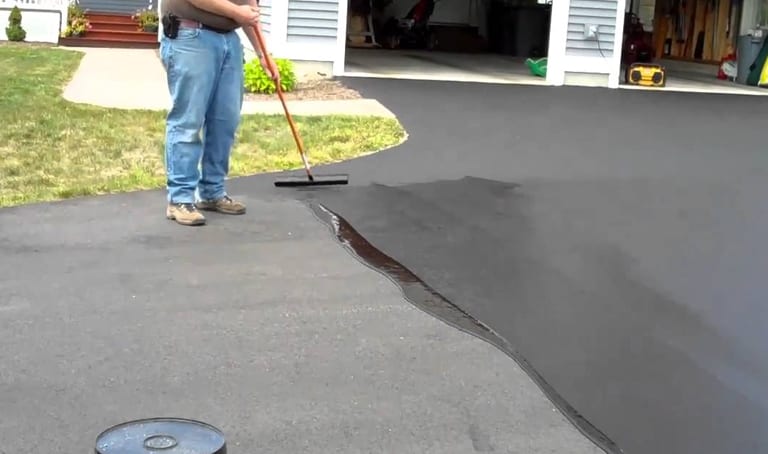Change Your Residential or commercial property's Aesthetic appeals: Commercial Parking Lot Leading and Asphalt Sealing Solutions
Change Your Residential or commercial property's Aesthetic appeals: Commercial Parking Lot Leading and Asphalt Sealing Solutions
Blog Article
Warm Mix Asphalt: A Lasting Remedy for Sidewalk
Warm Mix Asphalt (HMA) has actually become a leading lasting selection for sidewalk options, supplying a myriad of ecological advantages and ingenious innovations. Its ability to lower and reuse products energy usage presents an engaging instance for its fostering in road building and construction jobs. In addition, the lasting efficiency and resilience of HMA make it a preferred option for infrastructure development. As the demand for green building methods expands, checking out the subtleties of HMA's sustainability can provide beneficial insights right into the future of sidewalk options.
Environmental Advantages of Hot Mix Asphalt

Additionally, Warm Mix Asphalt helps to alleviate urban warm island results. Its dark color soaks up sunlight, lowering the amount of warm mirrored back into the ambience compared to lighter-colored pavements. This can decrease ambient temperatures in metropolitan locations, decreasing the need for air conditioning and eventually reducing energy intake.
Additionally, Warm Mix Asphalt adds to improved stormwater management. Its porous nature enables water to reenergize and penetrate the sidewalk groundwater products, reducing runoff and the risk of flooding. These environmental benefits make Hot Mix Asphalt a sustainable option for paving highways and roads.
Energy Efficiency in HMA Production
Is energy efficiency an important consider the manufacturing of Warm Mix Asphalt (HMA)? Definitely. Power plays a substantial duty in the manufacturing of HMA, influencing both price and ecological sustainability. One crucial element of energy efficiency in HMA production is making use of cozy mix asphalt (WMA) modern technologies (regrading). WMA permits the blending and positioning of asphalt at reduced temperatures contrasted to standard warm mix asphalt, causing reduced energy consumption during manufacturing. This procedure not only lowers gas usage however additionally reduces greenhouse gas discharges, making it a more eco-friendly alternative.
Moreover, developments in plant innovations have led to even more energy-efficient HMA production processes. Modern plants are developed with attributes like recycled asphalt pavement (RAP) processing capacities, effective heater systems, and enhanced insulation, all adding to power financial savings. By maximizing power use in HMA manufacturing, the industry can decrease its carbon footprint while maintaining top quality sidewalk materials. Power performance is, as a result, a critical consideration in guaranteeing the sustainability of Warm Mix Asphalt production.
Recyclability of Warm Mix Asphalt
The recyclability of Warm Mix Asphalt (HMA) is an essential aspect of its sustainability and lasting environmental impact. HMA is just one of one of the most recycled materials in the United States, with over 100 million lots of redeemed asphalt sidewalk (RAP) being recycled annually in brand-new sidewalk building and construction. Recycling HMA uses a number of environmental benefits, such as lowering Look At This the requirement for virgin products, lowering power consumption throughout production, and decreasing the quantity of waste sent to landfills.
The process of reusing HMA includes grating the existing pavement, squashing it right into smaller items, and blending it with new aggregate and asphalt binder to develop a recycled mix. On the whole, the recyclability of HMA plays a considerable role in advertising lasting practices within the pavement sector.

Long-Term Efficiency of HMA
Asphalt sidewalks show resilience and strength over an extensive duration, mirroring the long-term efficiency of Hot Mix Asphalt (HMA) The long life of HMA can be associated to its capacity to stand up to rush hour tons, extreme special info weather condition problems, and the impacts of aging. Research studies have shown that well-designed and properly constructed HMA pavements can last for two decades or even more with routine maintenance. The key to optimizing the long-lasting performance of HMA hinges on using high-quality products, adhering to finest methods in construction, and implementing reliable upkeep techniques. Proper water drainage, regular assessments, and timely repairs are crucial for maintaining the structural integrity of HMA sidewalks gradually. Additionally, advancements in HMA modern technology, such as the use of polymer-modified binders and cozy mix asphalt, have actually even more boosted the longevity and durability of HMA pavements. By focusing on quality building and construction and maintenance techniques, HMA proceeds to prove itself as a lasting and affordable solution for resilient pavement framework.

HMA: Durability and Sustainability
Showing both longevity and sustainability, Hot Mix Asphalt (HMA) has come to be a foundation in the construction of durable pavement infrastructures - hot mix asphalt. HMA's durability originates from its ability to hold up against heavy lots, severe weather, and high website traffic volumes, making it a trusted option for highways, highways, and flight terminal paths. The structure of HMA, which typically includes accumulations, binder, and filler, plays an important duty in improving its long life and resistance to damage
In addition, HMA's sustainability depends on its recyclability and energy-efficient production procedure. The capacity to reuse reclaimed asphalt sidewalk (RAP) in brand-new HMA combinations minimizes this hyperlink the need for virgin materials and reduces the ecological influence of sidewalk building and construction and maintenance. Additionally, the energy performance of generating HMA depends on its lower mixing temperatures compared to other pavement products, causing lowered energy consumption and greenhouse gas emissions.
Final Thought
Finally, hot mix asphalt (HMA) provides a sustainable option for sidewalk with its eco pleasant attributes. HMA's recyclability, power performance in manufacturing, and lasting resilience make it an environment-friendly option for roadway building. By saving natural resources, reducing waste, and lowering greenhouse gas emissions, HMA plays a vital duty in promoting sustainability in facilities advancement. Its capability to mitigate city warmth island effects better emphasizes its value in creating environmentally aware and durable pavement systems.
HMA is one of the most recycled materials in the United States, with over 100 million loads of redeemed asphalt pavement (RAP) being recycled every year in new sidewalk building.The procedure of recycling HMA involves grating the existing pavement, squashing it into smaller sized items, and blending it with new accumulation and asphalt binder to create a recycled mix.Asphalt sidewalks demonstrate longevity and resilience over a prolonged duration, reflecting the lasting performance of Warm Mix Asphalt (HMA) Additionally, improvements in HMA technology, such as the usage of polymer-modified binders and warm mix asphalt, have better improved the longevity and durability of HMA sidewalks. The ability to reuse redeemed asphalt pavement (RAP) in new HMA combinations decreases the need for virgin products and reduces the ecological impact of pavement building and construction and maintenance.
Report this page